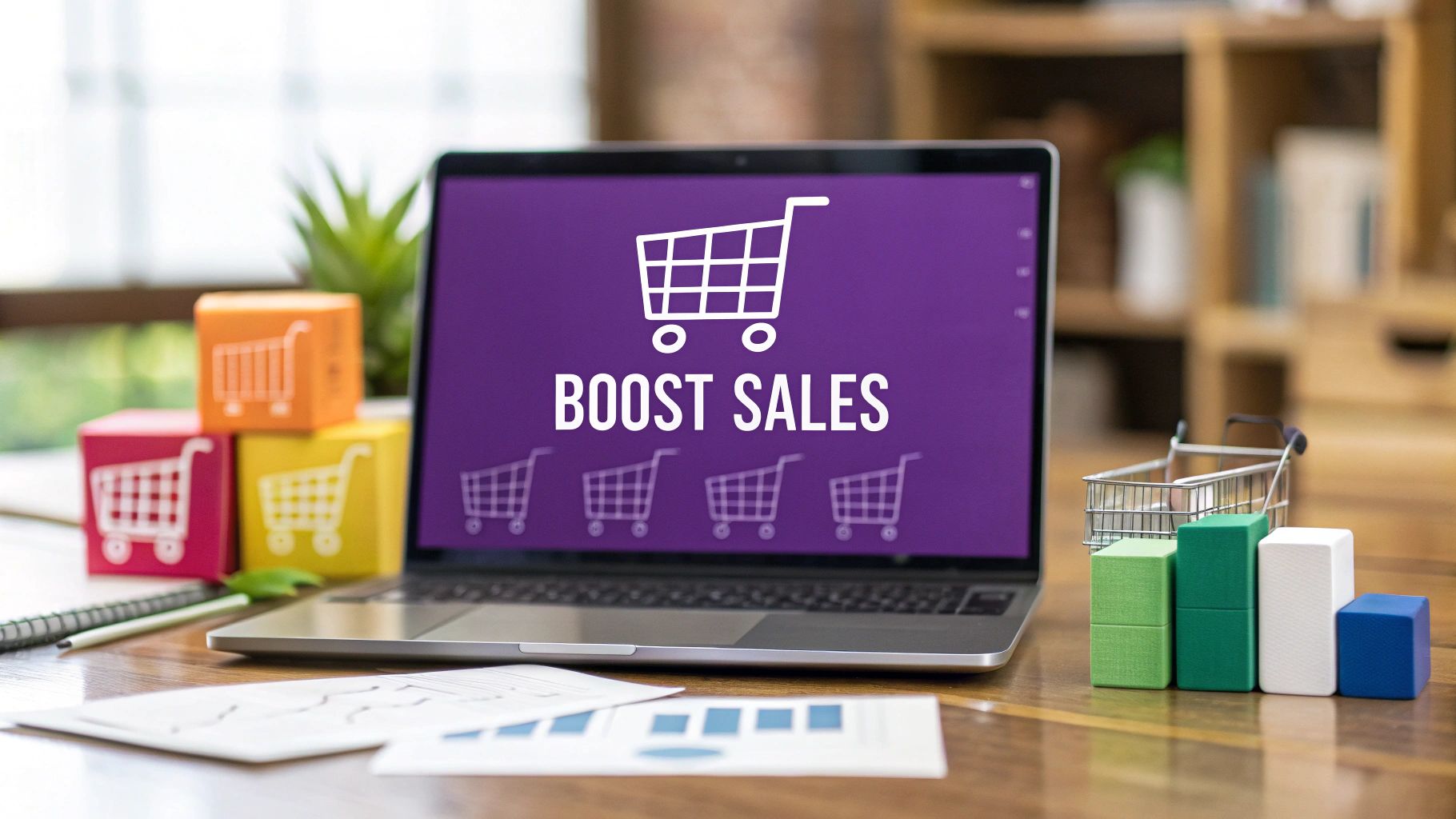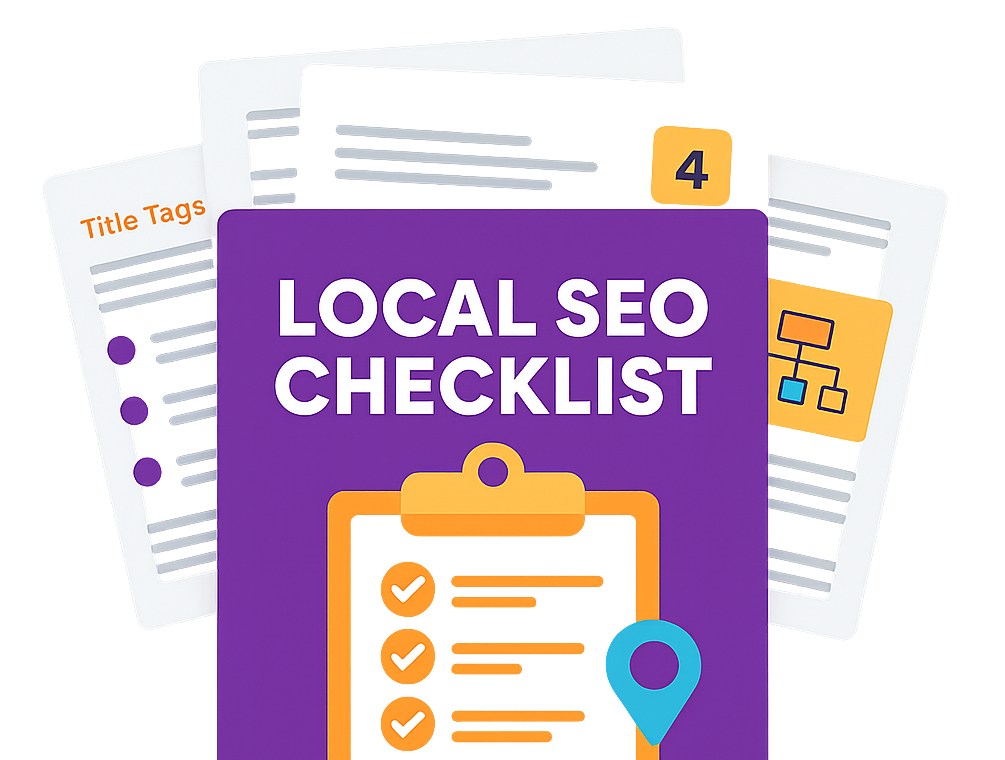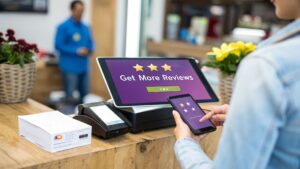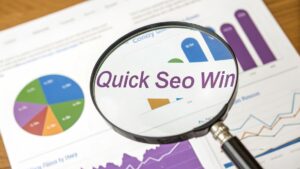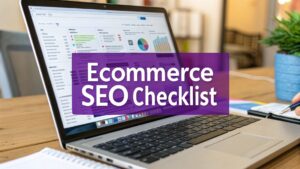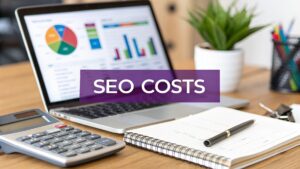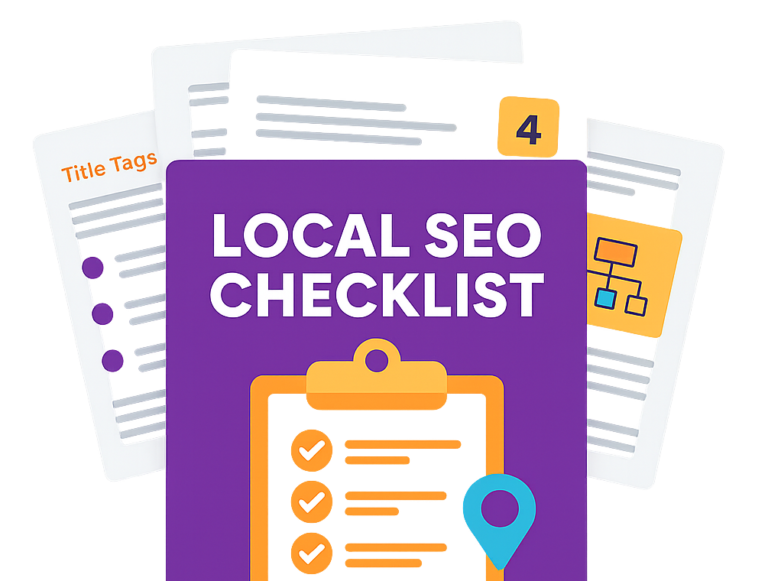To really boost your ecommerce sales, you need to play both the short game and the long game. Short-term wins come from things like targeted ads and promotions, but the real, sustainable growth comes from long-term strategies like optimising your site and building rock-solid brand trust. It’s all about attracting the right people and making sure your digital shop is primed to turn them into loyal customers.
Building Your Foundation for Ecommerce Success
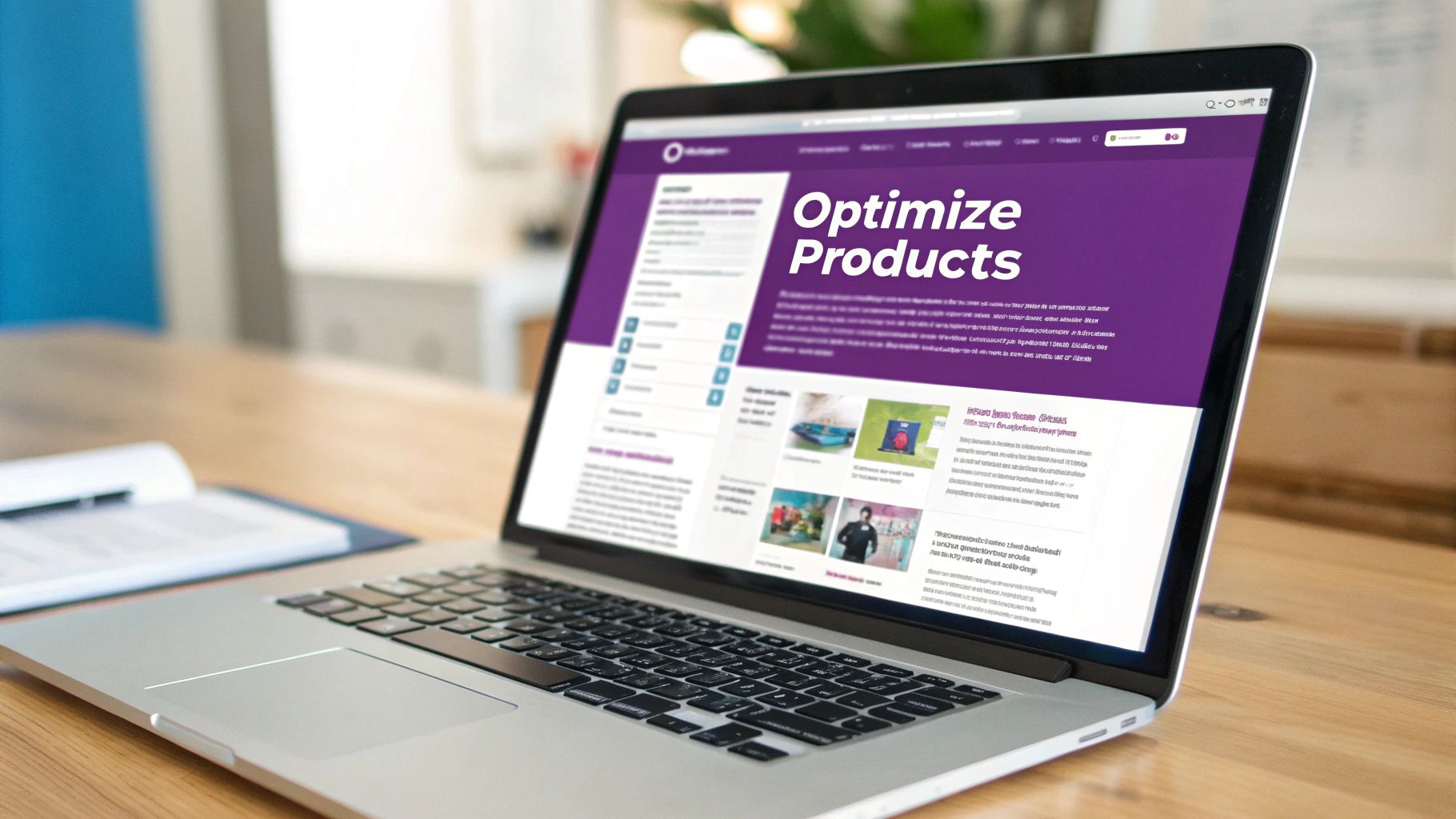
Before you start throwing money at ads or slashing prices, you have to get the fundamentals right. I’ve seen so many businesses fall into this trap: they spend a fortune driving traffic to a website that just isn't ready for it. The result? Wasted cash and visitors who leave in frustration. Lasting success is built on a solid base.
The UK ecommerce market is huge, but it's also incredibly savvy. Shoppers here expect a seamless, fast, and personal experience. It's not just a trend; by 2025, online sales in the UK are predicted to make up 30.7% of all retail sales. That's a market estimated to hit a massive £599.07 billion. Digital isn't just an option anymore; it's the main event in British retail. You can dig deeper into these retail benchmarks over on eMarketer.
Core Pillars of Sustainable Growth
If you want a slice of that pie, you need to focus on building a resilient and profitable business. That starts with a serious commitment to the entire customer journey. Forget quick fixes. Instead, concentrate on these core pillars, which we’ll break down throughout this guide:
- A Flawless User Experience (UX): Your site must feel intuitive and be a breeze to navigate, especially on mobile, where most people are shopping these days.
- Robust Site Performance: A slow or buggy website is a conversion killer. Fast load times and a checkout process without any friction are absolutely non-negotiable.
- Genuine Brand Trust: People buy from brands they trust. You build this with clear policies, real customer reviews, and outstanding service.
One of the most common mistakes I see is businesses focusing only on getting new customers while ignoring the actual path to purchase. A brilliant marketing campaign will always fall flat if it leads to a clunky, frustrating website.
A Customer-Centric Approach
At the end of the day, increasing ecommerce sales is all about understanding and serving your customer better than anyone else. This means getting into the data, analysing their behaviour, listening to their feedback, and constantly tweaking their experience. For a small business, this might sound overwhelming, but even small, consistent improvements can deliver big results.
Making sure your website shows up in search engines is a critical part of this foundation. For smaller businesses, looking into affordable SEO services for small business can give you the expertise you need to compete without a massive budget. This guide will walk you through actionable steps to optimise your store, get your marketing right, and build a business that’s set up for the long haul.
Turning Your Digital Storefront Into a Conversion Machine
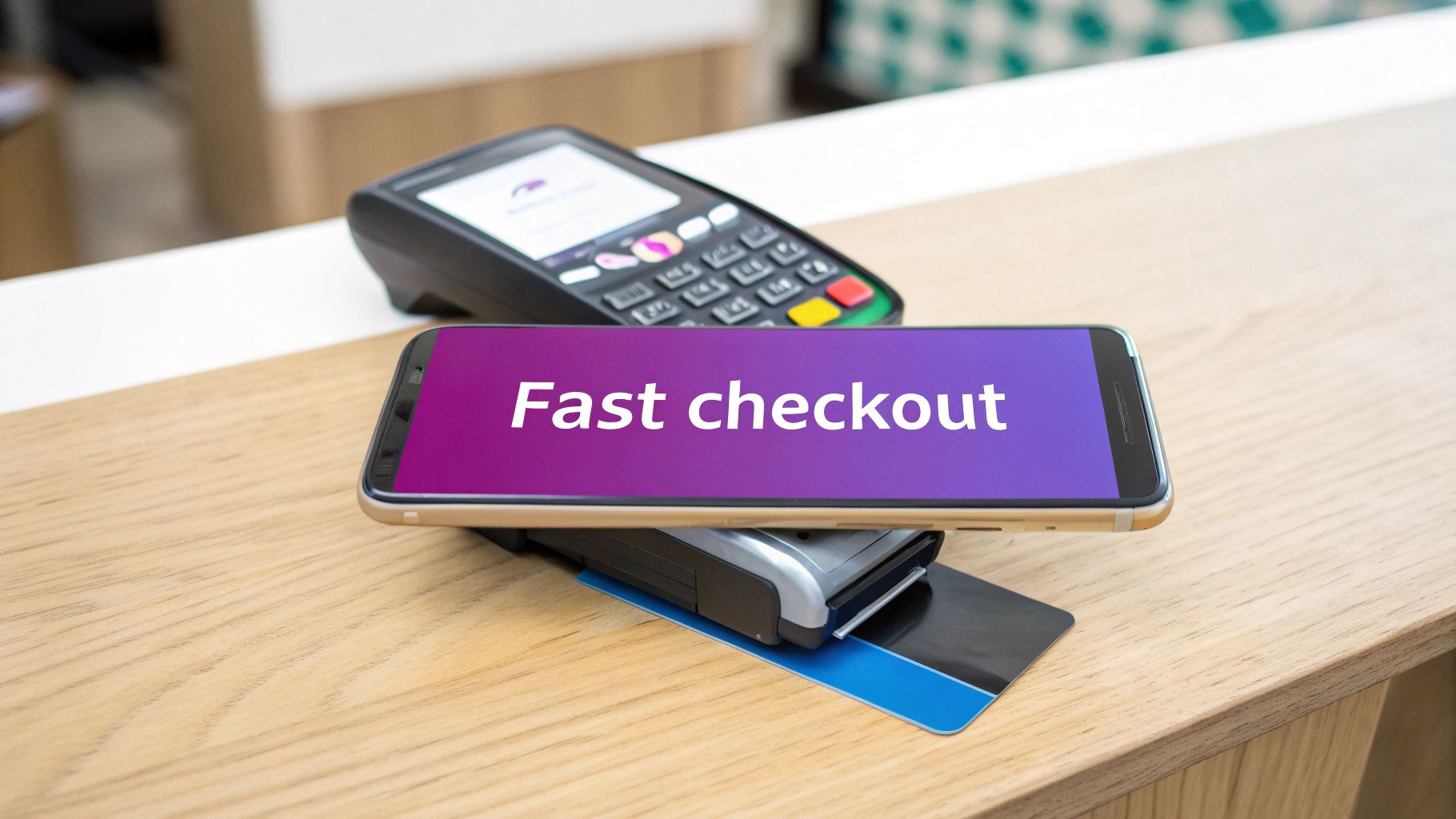
Take a look at this screenshot from Shopify's UK site. It’s a perfect example of what a high-converting digital storefront should be: clean, modern, and with a call-to-action that’s impossible to miss. The uncluttered layout and direct messaging are all designed to get visitors to take that first step without any friction.
Your website isn’t just an online catalogue; it's your best salesperson, working tirelessly around the clock. To really boost your ecommerce sales, this digital storefront needs to be persuasive, easy to navigate, and laser-focused on turning casual browsers into loyal customers. In the fiercely competitive UK market, generic advice just won't do.
What you really need is a deep understanding of what UK shoppers want and a site built to give it to them. That all starts with a mobile-first design philosophy.
The UK boasts the largest ecommerce market in Europe, with retail ecommerce revenue expected to hit an incredible £127 billion in 2024. What’s really eye-opening is that a massive 69% of all online purchases in the UK are made on smartphones. If your mobile experience isn't seamless, you're not just making a small mistake—you're actively leaving money on the table.
Crafting an Intuitive User Journey
A confusing website is a closed website. Simple as that. From the moment a potential customer lands on your page, their path to making a purchase needs to feel effortless and logical. This all comes down to optimising your site’s navigation and search functions.
Your navigation menu should be straightforward, with categories labelled in a way that makes immediate sense to a first-time visitor. Ditch the jargon and overly clever names for your product sections. If you sell clothes, "Men's," "Women's," and "Sale" will always outperform quirky but confusing alternatives.
Just as critical is a powerful on-site search. Shoppers who use search usually know what they want and have a much higher intent to buy. Make sure your search bar is easy to spot and delivers quick, relevant results—even if the user makes a small spelling mistake.
The Power of Visuals and Compelling Copy
Let’s be honest, people buy with their eyes first. High-quality product photography and videos are completely non-negotiable. They do more than just show what your product looks like; they tell a story and help customers imagine the item in their own lives.
- Use multiple high-resolution images: Show your products from every conceivable angle.
- Include lifestyle shots: Display the product being used in a real-world context.
- Add product videos: Demonstrate features and benefits in action. This alone can give your conversion rates a significant lift.
Once the visuals have grabbed their attention, it’s the product description that seals the deal. Don't just list technical specs. Focus on the benefits and the problem your product solves for the customer. Use bullet points to make key features easy to scan and write in a tone that reflects your brand's personality.
Think of your product page as a conversation. The images create the initial spark, and the description provides the persuasive argument that convinces the customer this product is perfect for them.
Streamlining the Checkout Process
The checkout is where so many sales are won or lost. A long, complicated, or untrustworthy checkout process is one of the biggest reasons for cart abandonment. Your number one goal here is to make this final step as frictionless as possible.
One of the most effective strategies is dedicated ecommerce conversion rate optimisation. This is all about continuously testing and refining every part of your site, especially the checkout flow.
To simplify your checkout, here are a few things to implement right away:
- Offer a Guest Checkout: Never force users to create an account. It’s a major roadblock that turns away countless new customers.
- Minimise Form Fields: Only ask for the information you absolutely need to process the order. Every extra field is another opportunity for a customer to drop off.
- Display Trust Badges: Show logos from secure payment providers like Visa, Mastercard, and PayPal. It’s a simple way to reassure customers that their details are safe.
- Provide Multiple Payment Options: People have their preferences. Cater to them by offering credit/debit cards, digital wallets like Apple Pay and Google Pay, and 'Buy Now, Pay Later' services such as Klarna.
When you're optimising your digital storefront, it's also worth looking into tools like the best AI chatbots for ecommerce to offer instant support. These can answer common questions, suggest products, and even help recover abandoned carts in real-time, all of which contribute to a better user experience and, ultimately, more sales.
Driving High-Value Traffic to Your Store

So, you’ve built a beautifully optimised digital storefront. That's a huge win, but it won't make you any money on its own. The next, and arguably most critical, piece of the puzzle is getting the right people to your site—visitors who are genuinely looking for what you sell.
Simply opening the floodgates to any old traffic is a classic mistake. It leads to sky-high bounce rates and a lot of wasted time and money. The goal is, and always should be, quality over quantity.
To get there, you need a smart, multi-channel marketing strategy that reaches your ideal customer where they already spend their time. This means blending organic and paid tactics to grab attention, build your authority, and ultimately, drive sales. Let's dig into how you can use SEO, paid ads, and email marketing to create a steady stream of profitable traffic.
Mastering Search Engine Optimisation for Organic Growth
Think of Search Engine Optimisation (SEO) as the bedrock of your long-term, sustainable traffic. Unlike paid ads, which disappear the second you turn off your budget, a solid SEO strategy can bring in new customers for months, even years. It’s all about making your store pop up on Google when people search for the things you sell.
When someone in the UK types "handmade leather bags" or "vegan trainers for running" into Google, you want your products to be right there on the first page. Traffic from these kinds of searches is pure gold because it comes from people with a clear intent to buy.
Here’s how you can start capturing this powerful organic traffic:
- Go after commercial intent keywords: Focus your efforts on terms that signal someone is ready to pull out their wallet. These often include words like "buy," "deal," "discount," or specific product names and models.
- Optimise every product page: Each product page is a potential landing page. Treat it like one. Make sure your primary keyword is in the page title, the URL, the product description, and the image alt text.
- Create genuinely helpful content: Start a blog and write guides that answer the real questions your customers have. If you sell shoes, you could create a post on "the best shoes for standing all day" and link directly to your most comfortable products. This positions your brand as an expert and captures traffic from people still in the research phase.
Demystifying Paid Advertising for Immediate Impact
While SEO is a long-term game, paid advertising is your shortcut to instant results. Platforms like Google Ads and social media channels let you put your products right under the noses of a highly specific audience. The whole game hinges on achieving a positive return on ad spend (ROAS)—making sure the money you bring in is more than what you spent on the ads.
For a deeper dive into making paid ads work for you, check out this guide on PPC for Ecommerce. It’s an essential skill for any store looking to scale up quickly.
Take Google Shopping ads, for instance. You know the ones—the product listings with images and prices you see right at the top of the search results. They're incredibly effective for ecommerce because they give potential buyers all the key info before they even click. A well-run campaign can deliver a constant stream of customers who are ready to buy now.
Paid advertising is like a tap you can turn on for instant traffic. But to make it profitable, you must be meticulous with your targeting, ad copy, and budget management. A poorly targeted campaign can burn through your budget with very little to show for it.
Building a Powerful Email Marketing Machine
I’ll say it again and again: email marketing consistently delivers one of the highest returns on investment of any channel out there. It's your direct line to your warmest audience—people who have already raised their hand and said they're interested in your brand.
First things first, you need to build that list. Give people a compelling reason to sign up. A few tried-and-tested incentives include:
- A one-time discount (e.g., 15% off your first order).
- Free shipping on their next purchase.
- Early access to new product drops or exclusive content.
Once you have subscribers, the real magic happens with segmentation and personalisation. Sending the same generic blast to everyone is a rookie error. Instead, group your audience based on who they are and what they've done.
Effective Email Segmentation Examples:
| Segment | Type of Content to Send |
|---|---|
| New Subscribers | A welcome series that tells your brand story and offers a first-purchase incentive. |
| Past Purchasers | Personalised product recommendations based on what they've bought before. |
| Cart Abandoners | A gentle reminder email (or a short series) showing the items they left behind, maybe with a small discount to seal the deal. |
| VIP Customers | Exclusive early access to new products, special loyalty discounts, and genuine thank you messages. |
This tailored approach shows your customers you're paying attention. It makes them feel understood and valued, which not only drives repeat business but also builds the kind of brand loyalty that fuels long-term, profitable growth.
Enhancing the Customer Experience to Boost Loyalty and AOV
Getting traffic to your site is just the start. The real magic happens when you turn those first-time visitors into loyal, repeat customers. A single sale is nice, but building a long-term relationship with a customer is where sustainable growth really comes from. It's about shifting your mindset from just processing orders to creating genuine brand loyalty.
This means levelling up every single touchpoint, from the moment someone lands on your site to well after their package arrives. When you nail this, you don't just encourage repeat business—you also naturally increase your Average Order Value (AOV).
The Real Impact of Personalisation
In a sea of online stores, generic marketing just doesn't cut it anymore. Real personalisation is so much more than slotting a customer's first name into an email. It’s about proving you understand their needs and tastes, creating a shopping experience that feels like it was built just for them.
What does this look like in practice?
- Tailored product recommendations: Use their browsing history and past purchases to show them items they’ll actually want to buy.
- Segmented marketing messages: Don't send the same offer to everyone. Create different deals for new visitors versus your VIP customers.
- Location-based customisation: Automatically show relevant shipping info or local promotions based on where a shopper is.
When you personalise the journey, customers feel seen and valued. That's a powerful driver for both loyalty and bigger baskets.
Personalisation isn't a gimmick; it's a fundamental shift in how you communicate. It’s the difference between shouting at a crowd and having a one-to-one conversation that builds trust and makes the customer feel understood.
Build Trust with Social Proof and Reviews
Today's shoppers are savvy. They trust other consumers way more than they trust slick advertising copy. This is exactly why social proof, especially customer reviews, is one of your most powerful assets for increasing ecommerce sales.
Good reviews work wonders for reducing purchase anxiety. When a potential buyer sees that other people have had a great experience with your product, it gives them the confidence they need to hit "add to basket." This isn't just a gut feeling; the data backs it up.

The numbers are clear: a huge majority of shoppers depend on reviews to make decisions, and having them provides a very real boost to your sales. You absolutely need a strategy for encouraging and displaying authentic customer feedback. It's non-negotiable.
To make the most of this, it's worth exploring different tactics to encourage customers to spend a bit more each time they shop.
Strategies to Increase Average Order Value (AOV)
The table below breaks down a few proven tactics for boosting your AOV, along with their benefits and how easy they are to put into action.
| Strategy | Primary Benefit | Implementation Level |
|---|---|---|
| Free Shipping Threshold | Motivates customers to add more items to their cart to avoid delivery fees. | Easy |
| Product Bundling | Increases perceived value and encourages purchase of multiple related items. | Medium |
| Upselling/Cross-selling | Shows customers higher-value or complementary products during checkout. | Medium |
| Tiered Loyalty Programmes | Rewards bigger spenders with exclusive perks, encouraging higher AOV over time. | Hard |
Each of these strategies plays a different role, but they all share the same goal: making each transaction more valuable for your business.
Make Shipping and Returns Effortless
Nothing kills a conversion faster than unexpected shipping costs or a complicated returns process. Seriously. A difficult post-purchase experience can ruin the reputation of even the best products, ensuring a customer never comes back. To build loyalty, you have to make these things transparent and completely hassle-free.
Be upfront about all shipping costs and delivery times. A classic, proven tactic is offering a free shipping threshold, like "Free Shipping on orders over £50." Customers will often pop one more thing in their basket just to qualify. In the same way, a clear, simple returns policy builds a huge amount of trust.
Turn Customer Service Into a Strength
Excellent customer service can transform a potential disaster into a moment that builds your brand. When a customer has a problem, it's your chance to shine. Support that is responsive, empathetic, and actually solves the issue shows you care about them as people, not just as order numbers.
Even your local presence can be a trust signal. For instance, making sure your business details are accurate on local directories is a small but crucial step. If you're looking for guidance on that, we have a complete guide to Google My Business optimisation that walks you through it.
Recent commerce data has spotted a fascinating trend. While UK online sales growth was modest in 2024, the average order value (AOV) actually rose by 7%. This points to a shift in behaviour: consumers are buying less often but are willing to spend more when they do. This makes every single customer experience more critical than ever. By focusing on loyalty and AOV, you're aligning your strategy perfectly with how people are actually shopping right now.
Using Data to Make Smarter Sales Decisions
In ecommerce, flying blind is a surefire way to burn through your marketing budget with nothing to show for it. Making decisions based on assumptions is an expensive habit. The truth is, your most valuable asset isn't some hot new marketing trend; it’s the data your store generates every single day.
Think of data as your compass. When you learn how to read it, you stop guessing and start making informed decisions that directly impact your bottom line. It all starts with getting comfortable with analytics and using the insights to constantly fine-tune your strategy.
Setting Up Your Analytics Foundation
First things first, you need to be sure you're actually capturing the right information. A tool like Google Analytics 4 (GA4) isn't just a nice-to-have; it's essential for any serious online store. Setting it up correctly isn't just a technical box to tick—it's the very foundation of your data-driven sales strategy.
At a minimum, you absolutely must be tracking these key metrics:
- User Behaviour: Watch how visitors move through your site, which pages they linger on, and which ones they leave immediately.
- Sales Funnel Performance: Pinpoint exactly where you’re losing customers. Is it on the homepage? A specific product page? Or during the final checkout steps?
- Traffic Sources: See which channels (organic search, paid ads, social media) are bringing you the most valuable, converting customers, not just clicks.
- Conversion Rates: Measure the percentage of visitors who actually complete a purchase or sign up for your newsletter.
Once this data is flowing in, you can begin asking the smart questions. Why do visitors from Instagram abandon their carts more often than those from Google? Which blog post is actually driving sales? The answers are your roadmap to smarter decisions.
From Data to Action: The Power of A/B Testing
Collecting data is one half of the puzzle. Acting on it is what separates the thriving stores from the ones that stagnate. This is where A/B testing, or split testing, becomes your secret weapon for optimisation.
The concept is simple. You create two versions of a webpage element (A and B), show them to different segments of your audience, and see which one performs better.
The core idea behind A/B testing is to let your customers tell you what they prefer. Stop the internal debates about whether a red or green button is better—test it and let the numbers give you the answer. This mindset shift alone can unlock significant conversion gains.
You can, and should, test nearly every part of the customer journey. You’d be surprised how much impact a seemingly small tweak can have.
High-Impact Elements to A/B Test
| Element to Test | Example A | Example B | Why It Matters |
|---|---|---|---|
| Call-to-Action (CTA) Button | "Buy Now" | "Add to Basket" | The wording can subconsciously influence a user's commitment to buy. |
| Product Page Headlines | "Durable Leather Work Boots" | "Boots Built to Last a Lifetime" | One headline appeals to logic, while the other connects with emotion and value. |
| Checkout Flow | Single-page checkout | Multi-step checkout | Some customers like seeing everything at once, others find a step-by-step process less daunting. |
| Homepage Hero Image | A lifestyle shot of the product in use | A clean, studio shot of the product | The main image sets the first impression and can attract entirely different customer types. |
By running these tests systematically, you make small, incremental improvements that compound over time. A 1% boost here and a 2% lift there quickly add up to a meaningful increase in your overall revenue.
What’s more, a data-driven approach doesn’t just live in a silo; it strengthens all your other marketing efforts. Knowing which pages convert best helps you build more effective paid ad campaigns and improve your search engine rankings. It even guides your content strategy, which is vital for building authority. Strong content attracts organic traffic and high-quality links, a topic we cover in our guide on how to build backlinks to supercharge your SEO. When you let data lead the way, every part of your ecommerce operation becomes more efficient.
Got Questions About Increasing Ecommerce Sales?
When you’re trying to grow an online store, it’s natural for questions to pop up. To give you some clarity and help you make confident decisions, we’ve put together answers to some of the most common queries we hear from UK business owners.
What's the Fastest Way to Increase Online Sales in the UK?
While there's no magic button for overnight success, the quickest way to get a sales lift is usually through a sharp, well-executed paid advertising campaign paired with a really compelling offer.
Think about it: running highly targeted ads on platforms like Google Shopping or social media can drive relevant, ready-to-buy traffic to your store almost instantly. If you sweeten the deal with a limited-time discount or a free shipping incentive, you give those shoppers the final nudge they need to click "buy".
But there's a catch. This approach only works if your website is ready for it, especially on mobile. A clunky, slow checkout will kill your momentum. For real, sustainable growth, this short-term boost needs to be part of a bigger picture that includes SEO and email marketing to build lasting customer relationships.
For a rapid sales increase, combine a targeted paid ad campaign with an irresistible offer. But remember, this is a short-term accelerator, not a long-term solution. Your site's performance is the foundation that makes it all work.
How Vital Is Mobile Optimisation for UK Ecommerce Sales?
It's not just vital—it’s non-negotiable. With reports showing that around 69% of UK online purchases happen on smartphones, a poor mobile experience is a direct line to lost revenue. If your site is slow, hard to navigate, or has a fiddly checkout on a mobile device, you are actively turning away customers every single day.
And effective mobile optimisation is about much more than just a responsive design that shrinks to fit a smaller screen. It means getting the details right:
- Blazing-fast page speeds to keep impatient shoppers from bouncing.
- Large, touch-friendly buttons and clear calls-to-action that are easy to tap.
- Simplified forms with as few fields as possible to cut down on friction.
- Support for mobile wallets like Apple Pay and Google Pay for that glorious one-tap checkout.
Honestly, prioritising the mobile experience is one of the highest-impact investments you can make to increase your ecommerce sales.
Should I Sell on Marketplaces Like Amazon as Well as My Own Site?
For many UK businesses, this is a really smart move. A multi-channel approach that includes selling on marketplaces like Amazon or eBay alongside your own branded website can be a powerful strategy. Marketplaces give you immediate access to a massive, built-in audience that already trusts the platform. This makes them a fantastic channel for brand discovery and for generating that initial sales volume.
Of course, it's not all upside. The main drawbacks are the hefty fees that eat into your margins, the lack of control over branding and the customer journey, and the incredibly fierce competition.
Here’s a savvy way to approach it: use marketplaces as your customer acquisition engine. Let new shoppers discover your brand there, but then focus your efforts on encouraging them to visit your own website for their next purchase. On your own site, you control the entire experience, you can build a direct relationship, and—most importantly—you earn significantly higher profit margins on every single sale.
At Bare Digital, we specialise in creating bespoke SEO strategies that drive real, tangible growth for ecommerce businesses. If you're ready to move beyond guesswork and implement a data-driven plan to boost your rankings and sales, we're here to help. Get in touch with us for a free, no-obligation SEO health check and a tailored activity plan.

